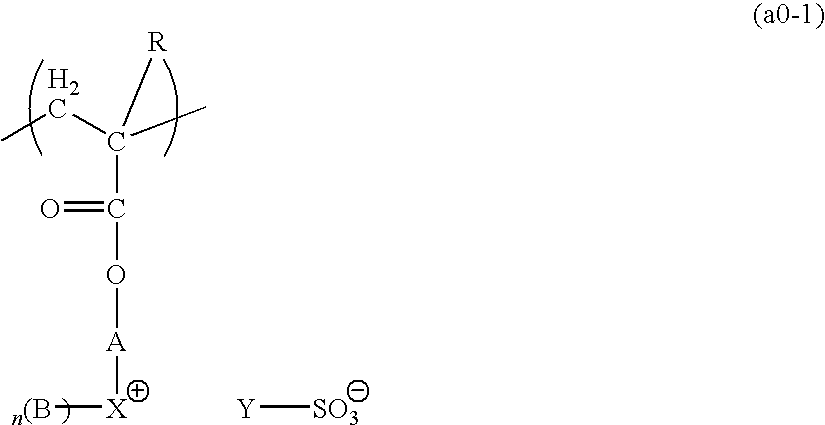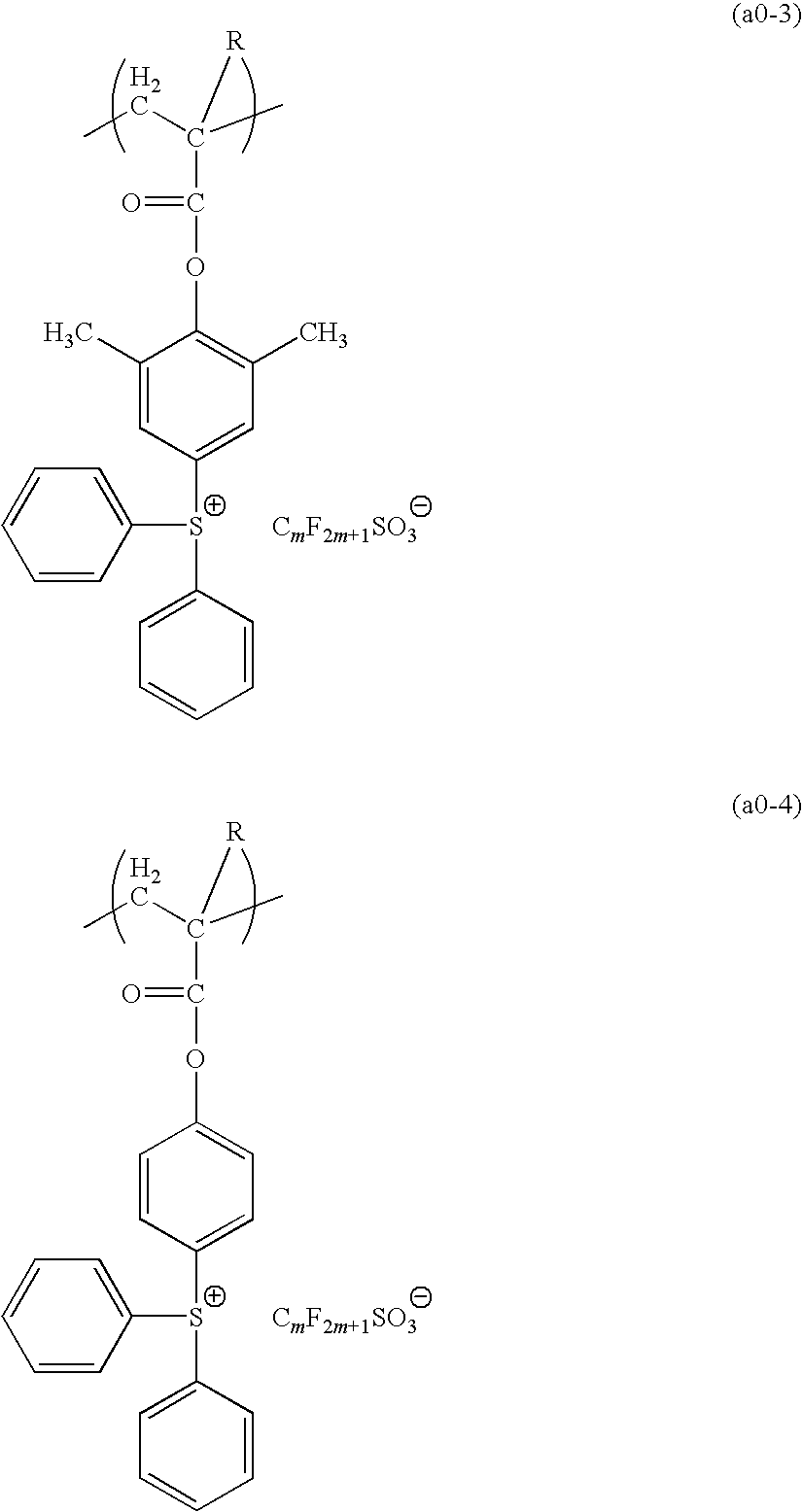Resist composition for immersion exposure and method for resist pattern formation
- Summary
- Abstract
- Description
- Claims
- Application Information
AI Technical Summary
Benefits of technology
Problems solved by technology
Method used
Image
Examples
synthesis example 1
[0242]0.7 g of the monomer component (1), 10.0 g of the monomer component (2), 7.2 g of the monomer component (3), and 5.0 g of the monomer component (4) were dissolved in 100 ml of tetrahydrofuran, and 0.35 g of azobisisobutyronitrile was added. Following refluxing for 6 hours, the reaction solution was added dropwise to 1 L of n-heptane. The precipitated resin was collected by filtration and dried under reduced pressure, yielding a white resin powder. This resin was termed resin 1, and the structural formula for the resin is shown below. The weight average molecular weight (Mw) of the resin 1 was 10,600, and the polydispersity (Mw / Mn) was 1.8. Furthermore, analysis by carbon-13 nuclear magnetic resonance spectroscopy (13C-NMR) revealed a compositional ratio (molar ratio) between each of the structural units shown in the structural formula below of a:b:c:d=36.4:38.6:23.9:1.1.
example 1
[0244]100 parts by weight of the resin 1 and 0.3 parts by weight of tri-n-octylamine were dissolved in a mixed solvent of propylene glycol monomethyl ether acetate (PGMEA) and ethyl lactate (EL) (PGMEA:EL=6:4 (weight ratio)), thus yielding a positive resist composition solution with a solid fraction concentration of 5% by weight.
[0245]Subsequently, the thus obtained positive resist composition solution was evaluated in the manner described below.
[Immersion Exposure Evaluation]
[0246]An organic anti-reflective film material (product name: ARC-29, manufactured by Brewer Science Ltd.) was applied to the surface of an 8-inch silicon wafer, and the composition was then baked at 225° C. for 60 seconds, thereby forming an organic anti-reflective film with a thickness of 77 nm and completing preparation of the substrate. The positive resist composition solution obtained above was applied uniformly across the surface of this substrate using a spinner, and was then prebaked and dried on a hotp...
PUM
 Login to view more
Login to view more Abstract
Description
Claims
Application Information
 Login to view more
Login to view more - R&D Engineer
- R&D Manager
- IP Professional
- Industry Leading Data Capabilities
- Powerful AI technology
- Patent DNA Extraction
Browse by: Latest US Patents, China's latest patents, Technical Efficacy Thesaurus, Application Domain, Technology Topic.
© 2024 PatSnap. All rights reserved.Legal|Privacy policy|Modern Slavery Act Transparency Statement|Sitemap



